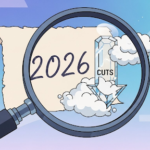When Containment Breaks
Markets don’t just react to headlines anymore. They calculate probabilities. But every now and then, something happens that breaks the model. This weekend, President Trump confirmed U.S. involvement in strikes on Iranian nuclear facilities, shifting the equation from “maybe” to a real-time recalibration of risk. Crude oil traders are bracing for Monday’s open, global shipping could be rerouted, and investors are scanning maps of the Strait of Hormuz like it’s 2003 again.
The old market narrative that Middle East conflicts “flare but don’t burn” is being tested hard. While past conflicts faded quickly from price charts, direct U.S. military involvement reopens questions long considered shelved, like supply disruptions, energy inflation, and sovereign risk premiums.
This Week I Learned…
The Choke Point You Shouldn’t Ignore
This week, I learned about the Strait of Hormuz, the world’s narrowest and perhaps most important energy corridor. Roughly 20 million barrels of oil and oil products pass through this 21-mile-wide waterway every day, along with 20% of global LNG supply. In market terms, this isn’t a minor vulnerability. It’s a single point of failure.
What makes Hormuz particularly risky is its geography. It connects the Persian Gulf to the Arabian Sea, and it’s wedged between Iran and the U.S.-allied countries of Oman and the UAE. Iran has repeatedly threatened to disrupt this passage, especially under sanctions or military pressure. Now, with U.S. bombers in the mix, traders are re-pricing that risk.
Why should investors care? Because even a few days of disruption could cause oil prices to spike, not due to a supply shortage, but rather due to fear pricing and speculative positioning. Markets often overreact to potential black swans, and the Hormuz scenario is the textbook example. Even if actual shipping remains unaffected, the perception that it could be is enough to cause volatility.
Understanding this bottleneck is key to grasping today’s geopolitical premium on commodities. It’s not just about bombs and headlines. It’s about chokepoints, and how fragile the flow of global energy really is.
The Fun Corner
Why Traders Don’t Like Narrow Spaces
Did you hear the one about the oil trader who panicked when someone mentioned “straits”? He thought it was a margin call.
All jokes aside, market superstitions around the Strait of Hormuz are legendary. Some traders won’t even schedule family vacations in late June, historically when tensions in the Gulf tend to flare up. That’s not just a coincidence, it’s decades of pattern recognition turned into ritual.
And while superstition isn’t a valid trading strategy, market psychology often runs on rules of thumb and gut instincts. When you hear “Hormuz,” they don’t think maps, they think stop-loss orders.
It’s remarkable how a small strip of water can cause such significant stress. However, markets may be driven by algorithms, but they’re still influenced by geography.
When the Illusion of Stability Breaks
Markets this week confront what they hate most: a complex conflict without a clear playbook. President Trump’s Saturday night announcement that the U.S. joined Israel’s strikes on Iranian nuclear sites may go down as the moment the Middle East’s latest chapter turned global.
What had been seen as a tense but regional dynamic just escalated to something broader. Investors had been pricing in posturing and indirect conflict, not bombers striking Fordow, Natanz, and Isfahan. Now, the pricing models are being scrapped, and risk assessments are being started from scratch.
Immediate reactions will likely spike crude prices and increase short-term volatility in energy and equity markets. But more importantly, this could reignite conversations around energy security, defense spending, and global inflation risks. What happens to shipping lanes? What if Iran retaliates through proxies or direct strikes? Will the Strait of Hormuz become a flashpoint or remain open?
There’s another angle here. Trump’s unpredictability means that geopolitical outcomes are no longer discounted linearly. One tweet or press conference can reverse market sentiment. This creates a premium not just in oil but in safe-haven assets like gold, Treasuries, and even the dollar.
But let’s not overreact. Fundamentals still matter. Inventories are high, and OPEC+ capacity is flexible. But the narrative has changed. The idea that these tensions can be contained is gone. Now the question is how long markets can run on risk management mode before fundamentals catch up—or break down.
The Last Say
When Headlines Rewrite the Playbook
This week, markets entered uncharted waters again, not because of what they feared, but because of what they thought was already priced in. The U.S. striking Iranian nuclear facilities was supposed to be a bluff. A two-week decision window was intended to allow for diplomacy. Instead, it gave investors a false sense of control.
Now, global risk sentiment is adjusting quickly. Energy volatility is back on the table, and previously stable asset classes, such as transportation, shipping, and regional bonds, are being reassessed. The key issue is not just whether Iran retaliates, but how markets internalize this shift. From energy to equities, risk is being repriced in real time.
Stay sharp this week. Watch the oil ticks. Listen for headlines. And remember: when containment breaks, so do the models.




















